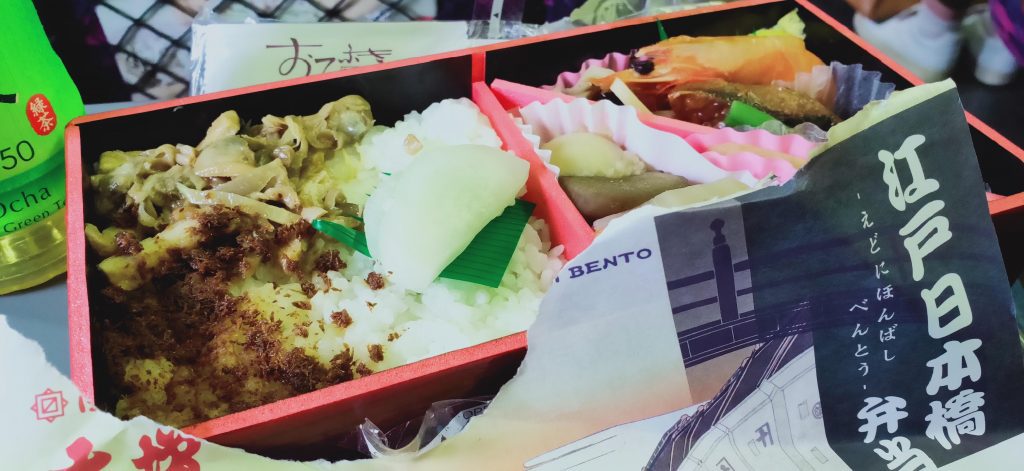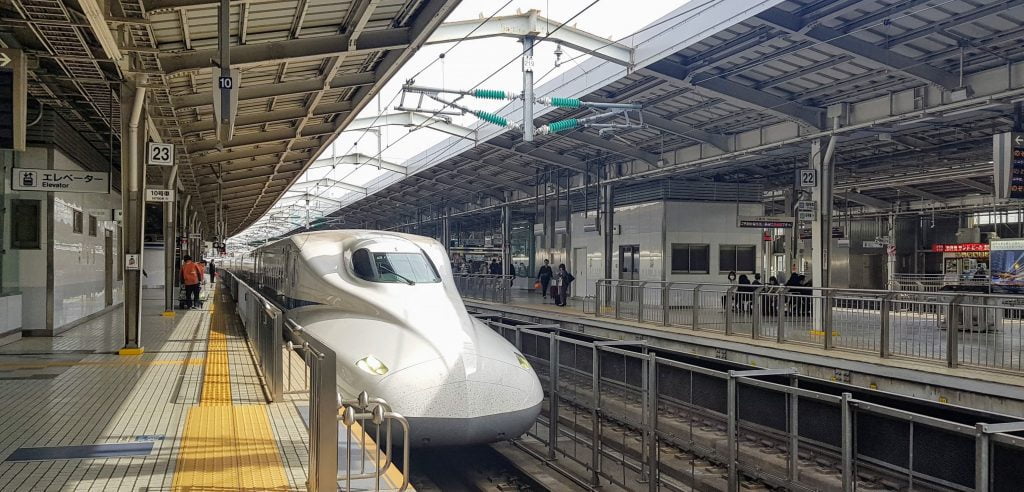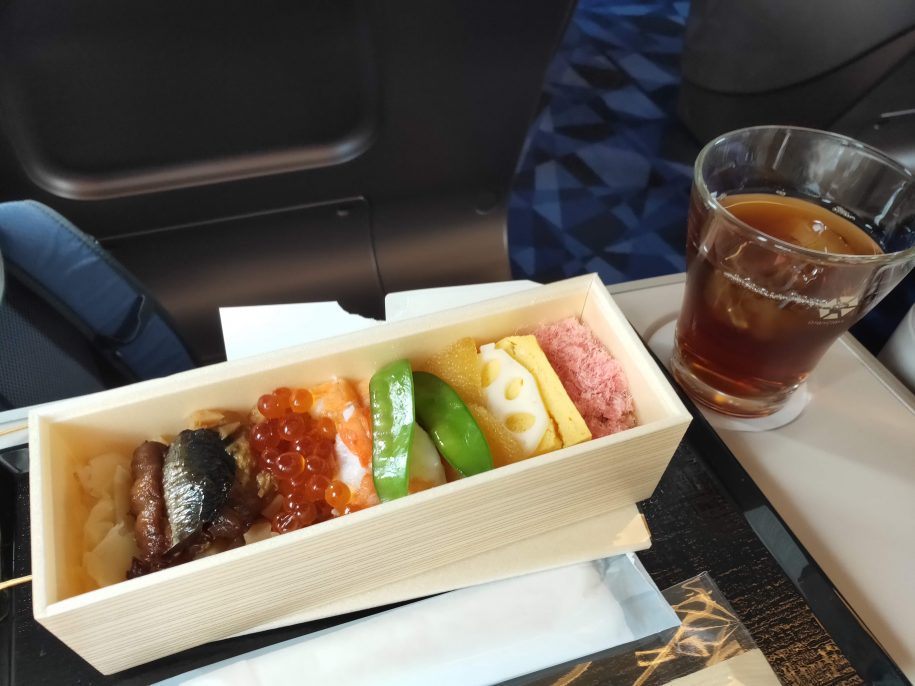No rules are posted on the trains, so that must mean it’s ok to eat..?
The trains in Japan, be it subways, local trains, or long-distance ones, all seem so clean! We’ve all probably ridden trains in other countries where food wrappers, chips, or worse litter the floors or even seats, but on Japanese trains there’s nary a crumb to be found! Is this a miracle of fastidiousness, or are people just refraining from eating in the first place? As it turns out, there are unwritten rules about all this, and it being Japan, they are largely followed.
Avoiding “meiwaku” is a guiding tenet for life in Japan. Meiwaku basically means discomfort or inconvenience between people, and avoiding meiwaku (or being irritated by others imposing it on you) is of constant concern in Japan. You may be asking yourself what this has to do with eating on a train, as at first blush, it wouldn’t seem like a meiwaku-related activity, but in actuality it is. As a basic rule, it is understood that others don’t want to see or hear you eating, nor do they want to smell what you are eating. That said, in practice, it is not so cut and dry. Question one regards on what type of train your potential malfeasance will occur.
The rules as they pertain to non-reserved, local and regional trains
Subways are always open seating, and when there are no seats left, people stand. Local train lines are, for the most part, of the same design – a prime example would be the Yamanote Line that circles Tokyo. Another point of distinction for our eating rule discussion is whether the train has no extra surcharge. Limited express trains often, and the shinkansen (“bullet train”) always have express surcharges. And so is it ok to eat on these trains? That would be a hard “no.”
On the above described trains, people are often in close quarters, be it sitting or standing. And often people are not just close to each other, but actually facing each other as well. Eating on a crowded train therefore opens up a world of meiwaku anxiety, and should therefore be avoided as much as possible.
This is all fine and good, but what if you are really hungry. As in, ready to pass out kind of hungry. In these cases, depending how loose your moral fortitude is, you can semi-acceptably eat small pieces of snack food on the sly. The food should be in single bite pieces as it approaches your mouth. For instance, a single cracker. The food should not be too noisy to eat, and it should not be stinky. It should also, very importantly, not be warm or hot food. Even though Chicken McNuggets would pass for their single-bitedness (and we are of course going sans sauce in this example), the hot, fried nature of the infraction makes it a definite no-no.
The good news here is that even if you must generally remain famished while riding local trains, it is perfectly fine to enjoy a beverage – as long as it is in a resealable container. Essentially, this means it must be a beverage in a 500ml or so plastic bottle. This “rule” neatly excludes alcoholic beverages, the drinking of which would most certainly be deemed uncouth.

The luxurious latitude of reserved seating
By their nature, trains with reserved seating tend to be used on longer rides. Further, there is no one standing, as standees are not allowed to be in reserved seating cars. With more space and civility in play, and a fold down tray to boot, eating is not only allowed on trains like this, but is downright part and parcel to the experience.
Great! So cue up the fried chicken, maybe some French fries, or just keep it more Japanese with a katsu-don? Whoooa! Not so fast. Even though you are allowed to eat in reserved cars, you are still subject to shaming in various degrees of subtlety if you indulge in hot food. Hot food has aromas, and aromas can be aggressive messengers of meiwaku. Looks like eating on trains in Japan is a bit complicated after all.
On the drinks side, the fantastic news is that you are free as a bird to imbibe as you wish. All the non-reserved train acceptables of course get the green light, but now your world opens up to hot coffee or tea, as well as beer or any other alcoholic beverage you like. And there’s no need to stress about daytime (or even morning!) drinking while on a reserved seating train. It’s 5pm somewhere, as they say.

The “ekiben” supplies the optimal method for eating on trains in Japan.
Getting on that Shinkansen from Tokyo to Kyoto, you could most certainly just bring along an egg salad sandwich you picked up from a convenience store, but hey, you’re on a long-distance train ride, so why not do it up a bit? This is where the ekiben comes into play. The word is derived from “eki,” which means train station, and “bento,” which as you may already know, is a Japanese rice box meal. Bentos are, almost without exception, purchased at room temperature or in a chilled state. With ekiben, there are no exceptions (see: aroma meiwaku).
Ekiben are sold at train stations from which limited express trains and the shinkansen depart from. You can usually find them both inside and outside the faregate areas, so it’s worth shopping around if you have the time. Just because the ekiben isn’t hot, that by no means translate to it being of poor quality or lackluster flavor. In fact, not only are ekiben often quite tasty, they are also regionalized, so the one you buy at Sendai Station may have some (cow) tongue, which is a regional specialty, and the one you buy at Nagoya Station may have something made with Hacho Miso, which is a sweeter, red miso that is generally only found in that part of Japan.
While a good ekiben may be a bit costlier that what you’d pick up at a convenience store (plan on around 1,000 yen or so, which is around US$9), it’s totally worth it, and will be more memorable than something generic from the 7-11.
Now you know how to eat. Or not to.
Phew, there sure are a lot of rules about eating on trains in Japan, aren’t there! But you, dear reader, have now completed this crash course in eating etiquette. Now go out and consume freely – within the proscribed constraints. Once you’re off that train in Kyoto, we’ve got food and sights that will top any ekiben.


Leave a Reply